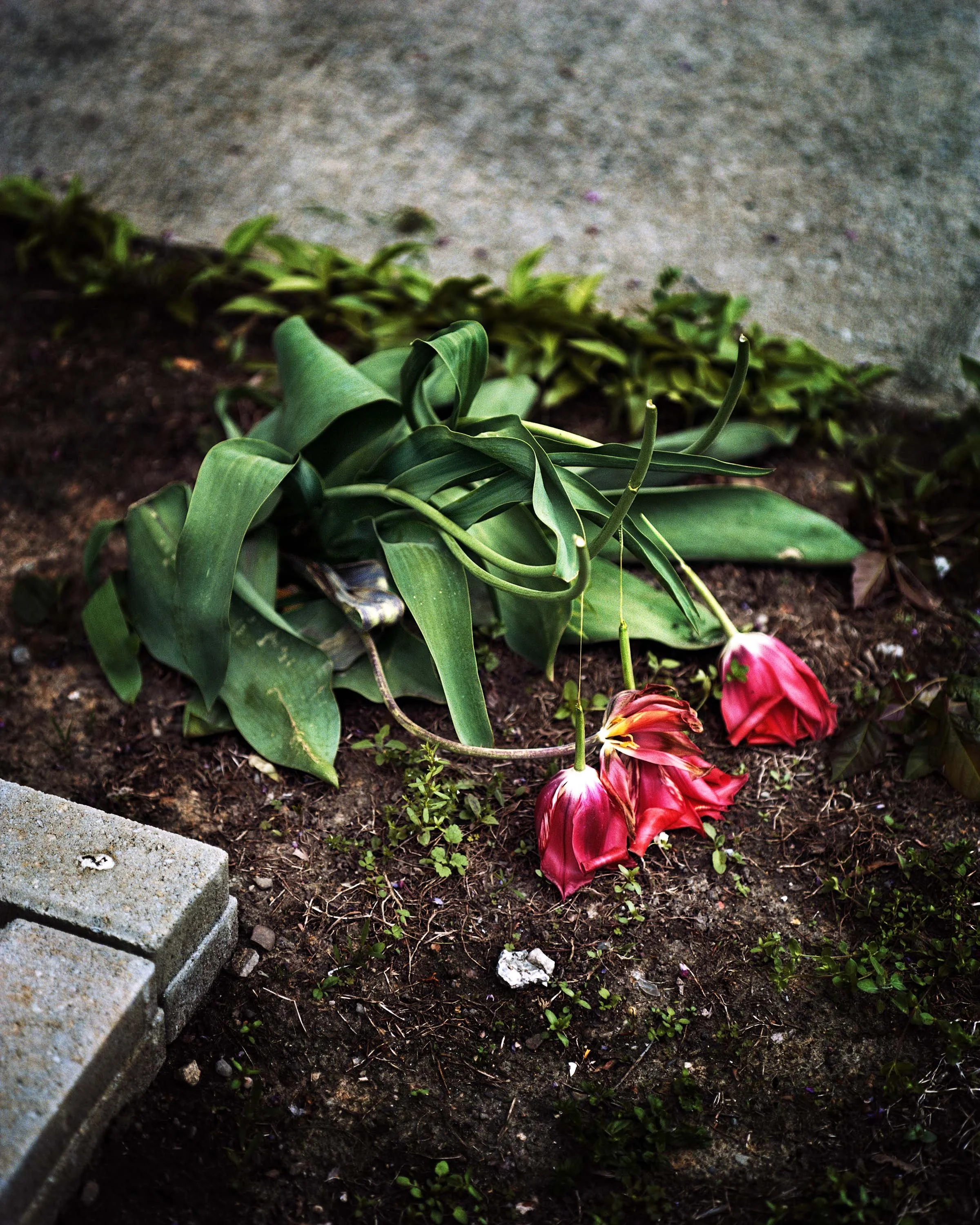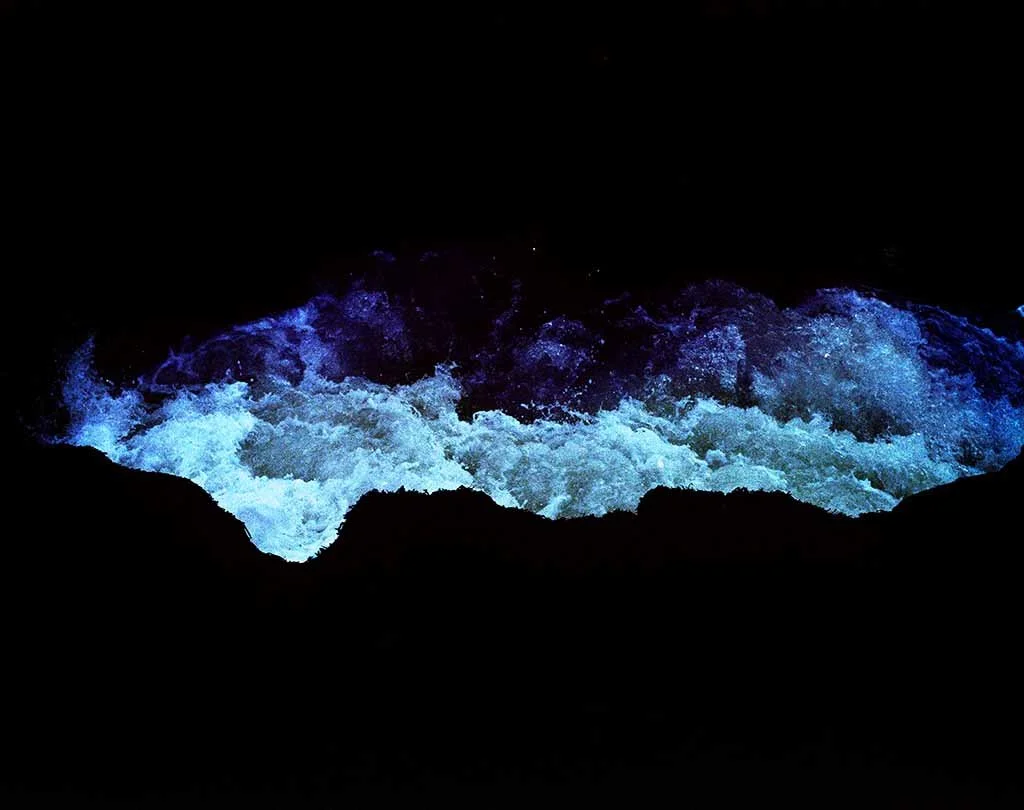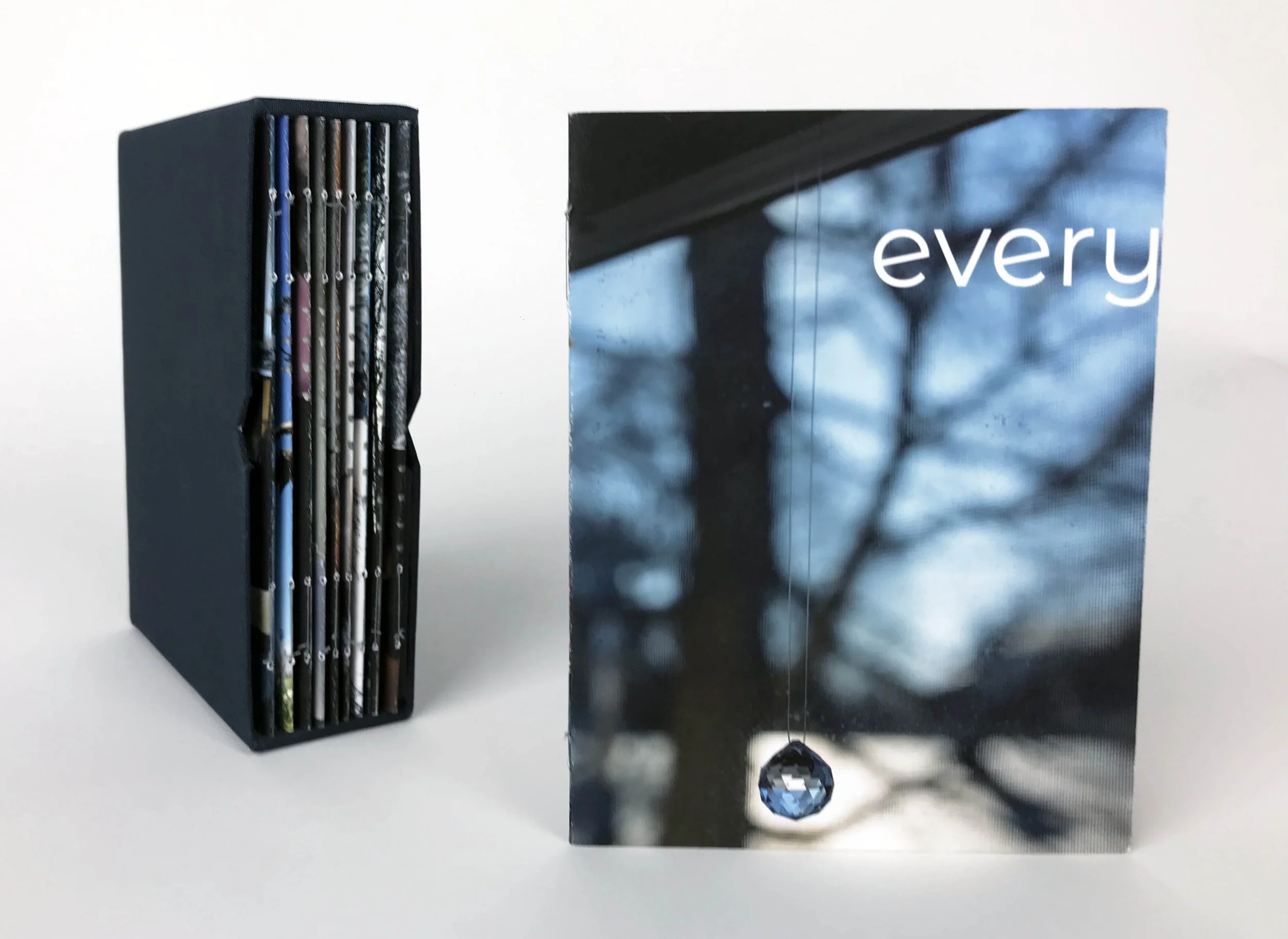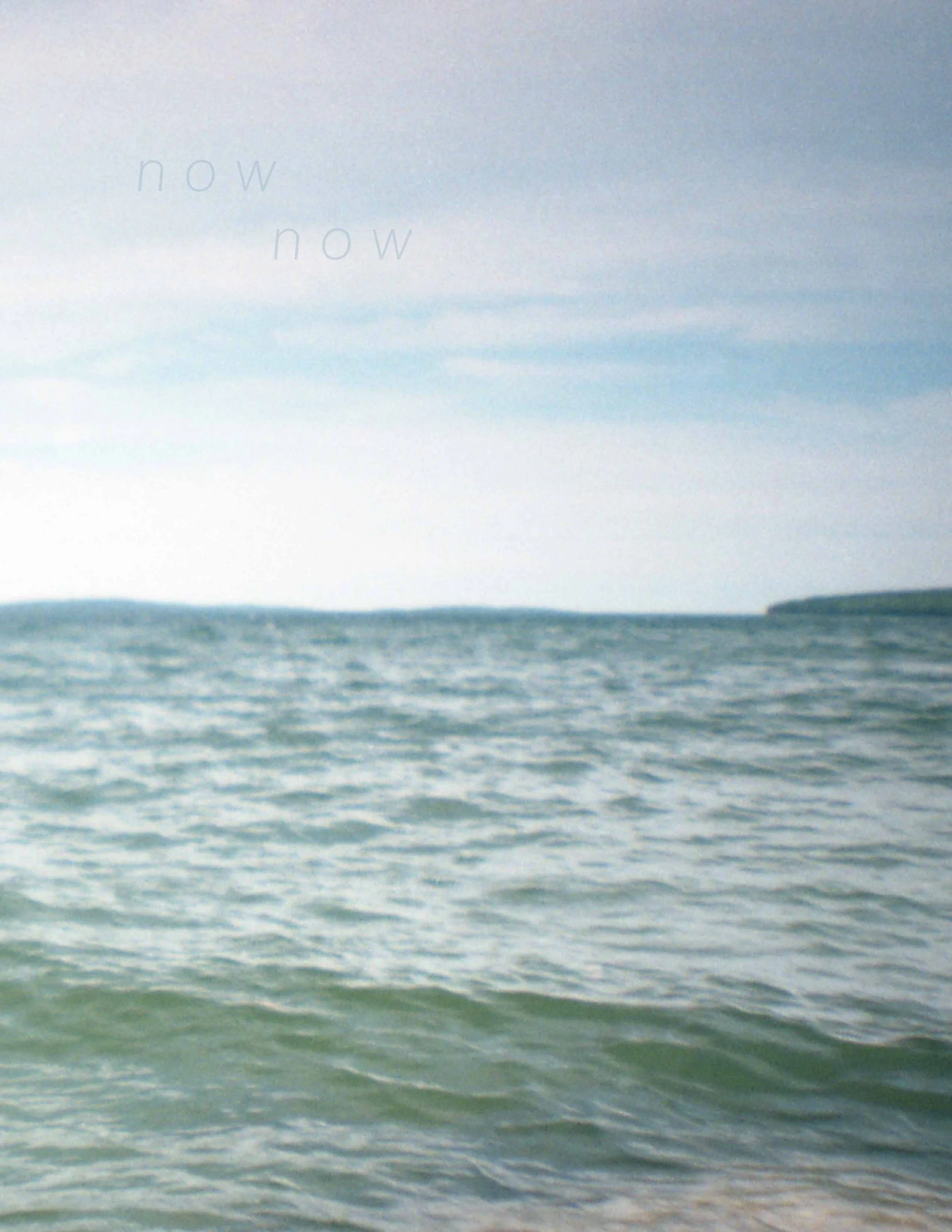









Tynan Byrne Opening Echoes
Untitled (Goose Cove wave), 2021
14x12", Archival Inkjet Print
Tynan Byrne (b.1992) is a photographer and book-artist based in Quincy, MA. He grew up on the coast of Maine, a place from which he draws deep inspiration and often references throughout his creative process. Fascinated by the intersection between language and image comprehension, he creates bodies of work investigating the impact that photography and sequence have when compounded with the written word. His series center around intimate and honest aspects of his life as a gay man, often containing links to his childhood, his romantic and interpersonal relationships, influences from various forms of magical realism, and a deep love for the craft, history, and methodologies of photography itself. Most recently, his work has been exhibited in Richmond, Virginia; Halifax, Nova Scotia; Montgomery, Alabama; Dallas, Texas; and Boston, Massachusetts, as well as several online galleries and publications. Byrne is a leading member of the Boston-based artist collective, Recently, a group of emerging artists who meet monthly to share work, offer and receive critique, and organize opportunities for public exposure. He currently works as the Instructional Media Technologist within the Art Department at the University of Massachusetts, Boston.
Opening Echoes is his first solo exhibition, and consists of four bodies of work that share a search for rationale, comfort, and desire in a recollection of histories which may not exist. The books, installations, and assembled photographs are contemplations on the power of nostalgia, including a longing for things that never happened; the urge to salvage a misspent adolescence; the need for reason amid romantic discordance; and the effort to reclaim ownership over a body and self when they suddenly feel foreign.
The Borogoves, 2020 - Present
An ongoing series of mis-fired, then hand-broken polaroids, “The Borogoves” forges a world of fictitious landscapes and atmospheres that rest in the uncanny valley between comprehension and improbability. The works are simultaneously painterly and photographic, and consist of dramatically enlarged versions of their original polaroid formats, allowing entrance into a chimeric realm of impurities, depression spots, and bleeding dyes. Each piece is named after a fabricated word from Lewis Carroll’s The Jabberwocky, a poem I have always been drawn to and in which I continue to find inspiration.
May you be found well, 2021
“May you be found well” is an inquiry into what wellness looks like when it cannot be seen. Over the course of a week last year, I began developing welts, blisters, and severe swelling that soon covered more than 30 percent of my body. Having never dealt with such an aggressive condition, I sought help from several dermatologists who determined it was a serious allergic reaction that would require heavy doses of steroidal creams and pills. Combined with an inherent insomnia and lifelong anxieties regarding death (my own and that of my family), my moods spiked erratically while my body ached, sparking a paranoia and fear that nearly overwhelmed me. Although the reaction finally receded after three months, the experience affected my relationships with my partner, peers, and especially my picture-making. The photographs from this period of healing–where time felt more precious and seemed to move slower–are tinted with the sense that they could have been my last, each a kind of isolated memorial. I found myself assessing the concept of a healthy mind/body connection and how the dissolution of such can manifest in external surroundings.
This all culminated in “May you be found well”, where images from this period are paired with journal entries collected from bouts of sleeplessness. The pages tell a story of time’s gradual healing and how not everything can grow back as it was. It’s there as hair in a sink and foliage that dies before springing anew, remnants of architecture fighting to stand the test of time, and quiet moments of rest. Meanwhile, the text embodies my inner monologue acknowledging the strangeness of our world and questioning my place in it. Inevitably, I reach no absolute conclusion of what wellness looks like, but rather, archive the evidence that its existence is a hidden force of its own–a binding agent between time and our idealized self.
Side Project, 2019-20
This installation pays homage to the eclectic history of queer zine culture, an era when LGBTQ+ people relied on an underground network of diverse and artistic magazines to connect their community. Often sexually explicit, but full of candid humor and inclusive journalism, the zines were produced frequently and distributed by hand. The DIY nature of these materials provided a sense of ownership to those who felt ‘othered’ by society and gave them the opportunity to build a unique culture parallel to the mainstream. As someone who identifies as a ‘side’–a term used to describe a person in the queer community who is not catagorized as either a top, bottom, or vers–I draw much inspiration from the personal accounts found in these zines. “Side Project” retools this method of storytelling to chronicle a controversial six months when my partner and I “opened” our relationship, a decision made to provide him what I couldn’t seem to otherwise. The zines are busy, loud, and convoluted short sequences that wed journal-like entries from nights of high tension to photographs that tumble over one another, each yearning to be seen and rationalized as their own scene. The words and phrases that wind through the pages are a unity of frazzled thoughts, hypothetical conversations, and soured mantras that directed the creation of each issue. When viewed in sequence, they narrate the process of confronting shame and eventually, learning to move forward.
now now, 2018-19
The book “now now” is a body of work I produced between 2018 and 2019 that aims to reconcile with the bitterness and guilt I’ve carried about my adolescence. Incorporating photographs from a five year period, this project documents the development of relationships between the men around me and a lifelong effort to navigate and decipher the bonds between platonic, romantic, and familial ties. Many queer individuals undergo a type of "second adolescence" during their twenties–one that allows them a similar opportunity to experiment and make the mistakes that many of their straight peers experienced as teenagers. Woven into this sequence of images are feelings of both longing for and animosity toward my adolescence—moments that recall an inaccessible, romanticized boyhood. Intimate portraits and vaguely voyeuristic scenes are paired alongside whimsical, atmospheric images that juggle the perspective between photographer, subject, and participant with a sense of play and reverence.














